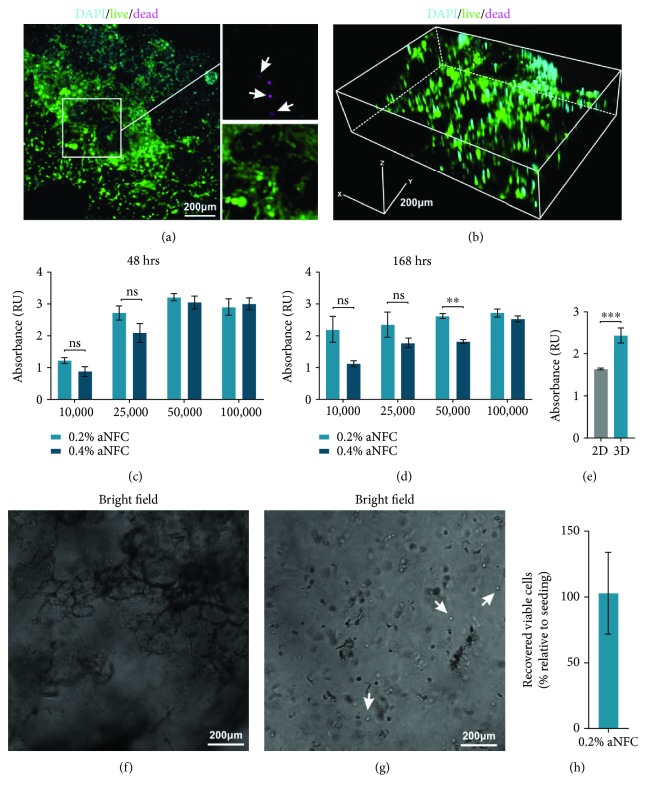Figure 3.
aNFC hydrogels are biocompatible with human ADSCs. (a) Confocal imaging of ADSCs within a 0.2% aNFC, stained with calcein (green, living cells) and ethidium homodimer-1 (magenta, dead cells) and counterstained with DAPI shows viable cells embedded within the aNFC, with few nonviable cells (arrows). (b) 3D reconstruction revealed even distribution of the cells in all dimensions of the aNFC. Bars in (a) and (b): 200 μm. (c–e) XTT viability analyses of different concentrations of ADSCs seeded within different densities of aNFC hydrogels show high viability after 48 h (c) and 1 week (d). Direct comparison with 2D controls revealed the significantly higher viability of ADSCs cultivated in 3D (e). (f–h) Viable MSCs can be retrieved from the 3D aNFC hydrogel. ADSCs were cultivated in a 0.2% aNFC hydrogel for 48 h and retrieved by enzymatic digestion of aNFC with cellulase resulting in a single cell suspension. In total; 103 ± 31% of viable cells (h) were retrieved relative to the number of cells seeded. ∗∗∗P < 0.001 and ∗∗P < 0.01. Bars in (f) and (g): 200 μm.

